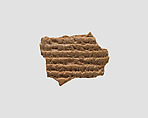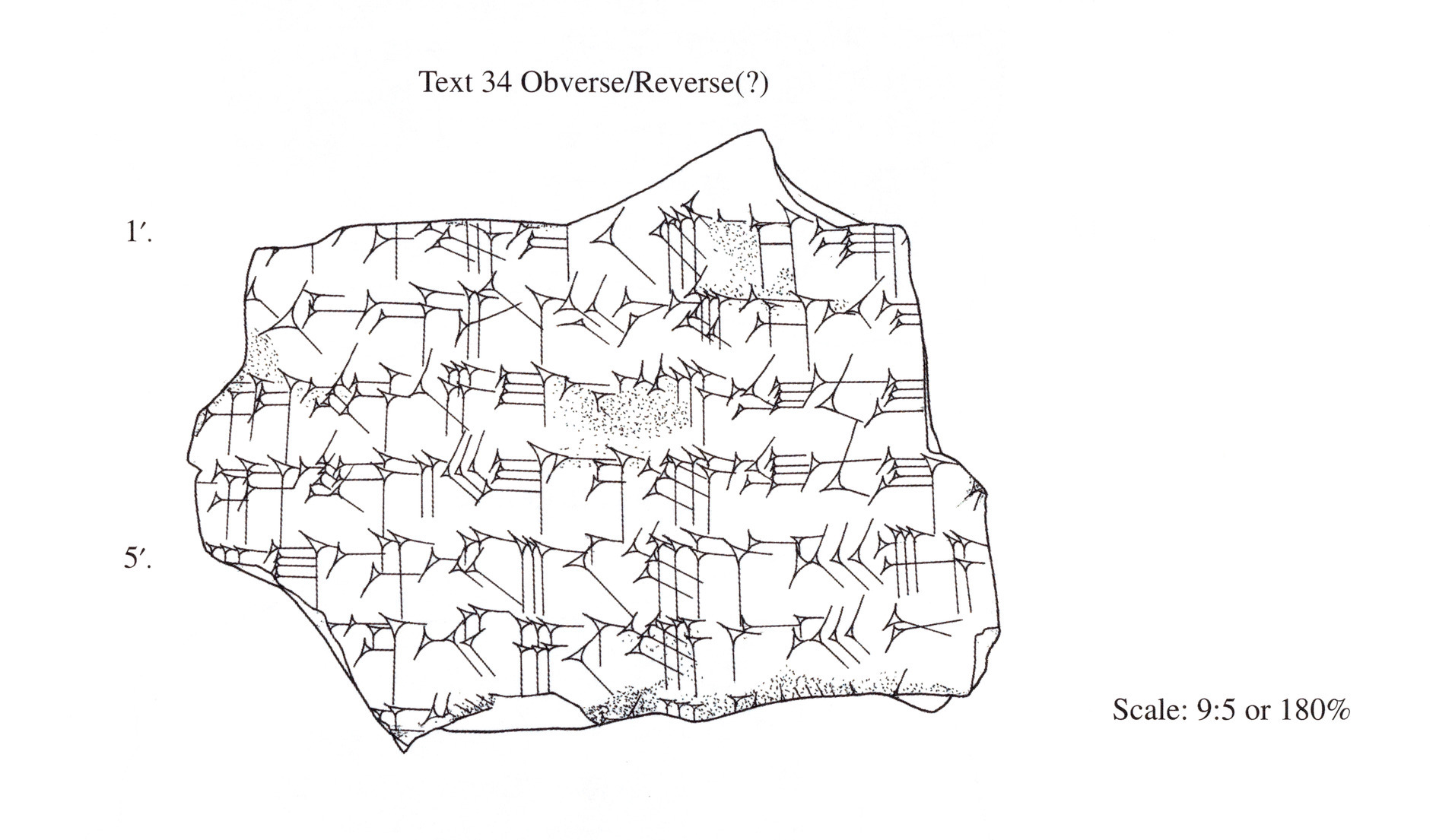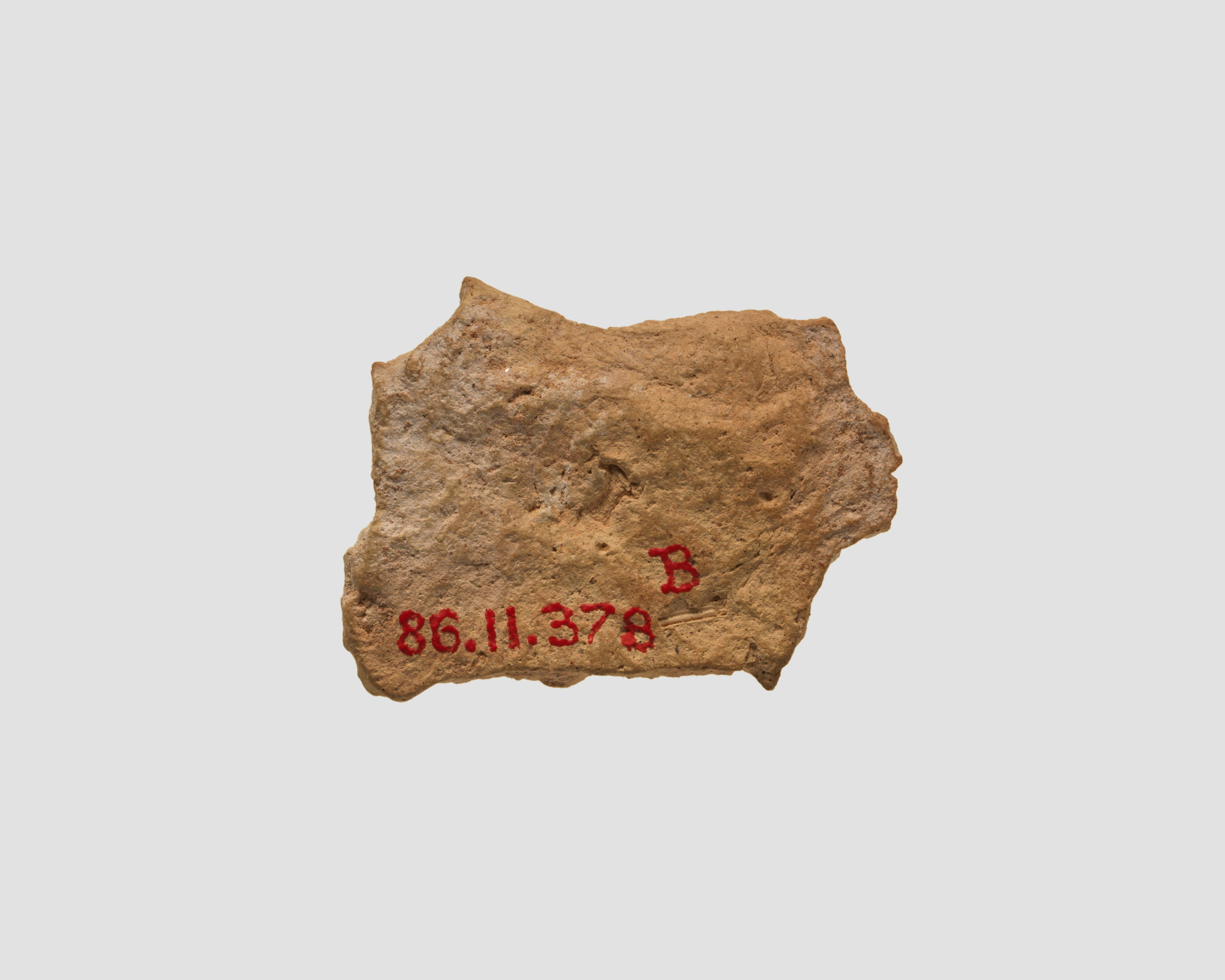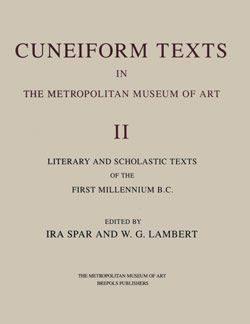Cuneiform tablet: fragment of a liver omen
Not on view
The invention of writing in approximately 3300 B.C. was one of many developments in administrative technology--including the use of geometric tokens for counting and cylinder seals to guarantee transactions--that accompanied the growth of the first cities and states in southern Mesopotamia. Proto-cuneiform is the name given to the earliest form of writing--pictograms that were drawn on clay tablets. Gradually, the pictograms became abstracted into cuneiform (Latin, "wedge-shaped") signs that were impressed rather than drawn. At its greatest extent, cuneiform writing was used from the Mediterranean coast of Syria to western Iran and from Hittite Anatolia to southern Mesopotamia. It was adapted to write at least fifteen different languages. The last dated cuneiform text has a date corresponding to A.D. 75, although the script probably continued in use over the next two centuries.
This fragment of a clay tablet records prognostications derived from observations of the conditions of the liver of sacrificial sheep – a method of divination that facilitated communication between the divine and human worlds. The text, which reads from left to right, describes different features of the liver and what they mean for the success of an army in battle. Extispicy (liver divination) is a well-known practice in the ancient Near East, and while omens recorded on clay tablets may originally be based upon the combined observation of events and liver features, many divination texts include occurrences that were unlikely to have been observed in nature, indicating that omen lists represent a type of abstract philosophical thinking.
This image cannot be enlarged, viewed at full screen, or downloaded.
This artwork is meant to be viewed from right to left. Scroll left to view more.





